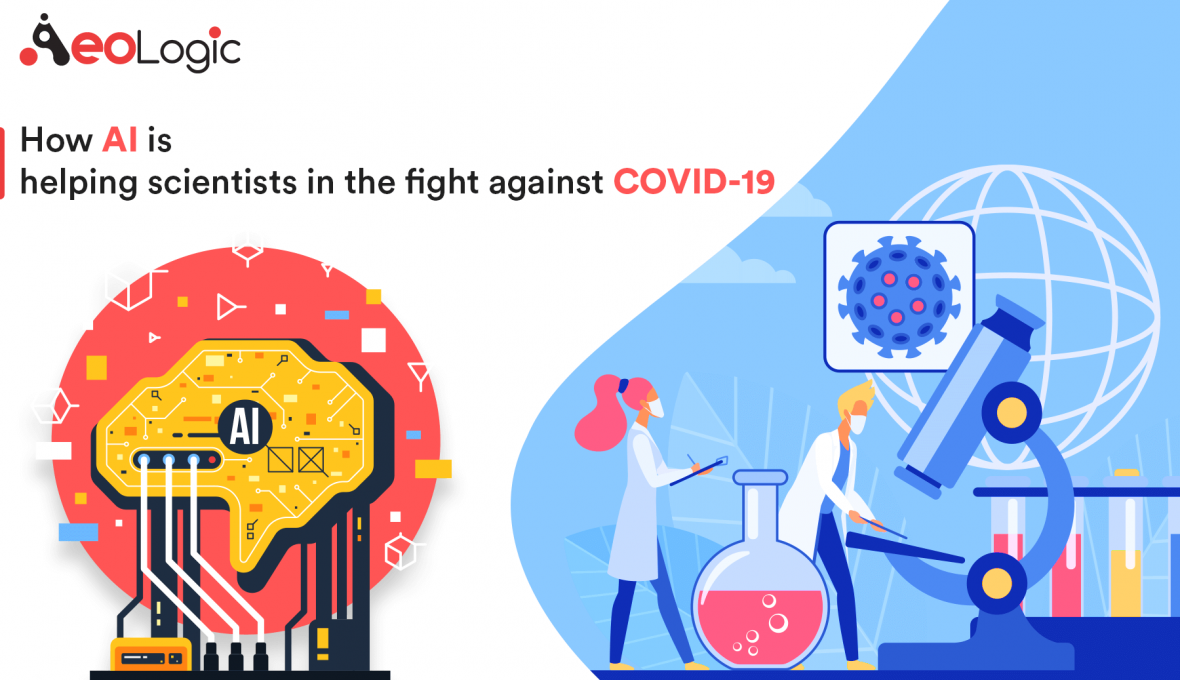From March 10 to May 5, 2020, the world has seen the gruesome side of coronavirus, and the results of downplaying a warning. All countries got into a state of traumatic confusion and chaos, that resulted only in the revelation of their own incompetencies. Result? A global state of emergency.
Within these dark shadows of coronavirus mutations just rolling into the streets of around 187 countries, scientists are now more forced, than compelled by reality to find a cure. And when death prevailing times like this pandemic occurs, scientists find alternatives through digitally disruptive technologies like AI, Blockchain and IoT or Internet of things.
When we speak about AI’s inclusion in fighting the battle against COVID-19 generalized perception like robotic predictions and robotic front line medical authorities come to mind. Although this might not be far from maturing into reality, but, for now, here’s how AI is at present assisting scientists in their battle against COVID-19–
Identification of vulnerable or susceptible COVID-19 patients– The first country to use AI in order to determine susceptible COVID-19 patients was Israel. Health maintenance organisation or HMO in the country assisted scientists and doctors with the ability to identify high-risk patients.
Usually, the system used in this mechanism has substantial medical data (possibly ranging from 10-30 years) stored in the system already, which then helps the new AI system to identify the high-risk patients at random.
In addition to this, AI systems can also assist in evaluating the level of treatment for every at-risk patient might need in future, like–
- Identifying a home-based care system
- Identifying the level of quarantine required
- Identifying the urgency of hospital admission
Identifying and Analyzing unpredictable diagnosis-
AI, when backed with machine learning, has proven to be invaluable in predicting dangers or risks in many areas. In the case of COVID-19 pandemic, machine learning can help in these specific areas–
Infection Risk- Recognzingin people or group with infection
Severity Risk- Any group or select individuals can be filtered through this combination for identifying the level of virus risk.
Outcome Risk- Probably the most needed one, with AI and ML, doctors can predict which type of treatment is well suited for the patient according to his medical conditions, and what could possibly the outcome of the treatment.
Although AI with Machine Learning is yet to be implemented, but there are few countries who are in the prototype testing phase.
Predicting the Risk of Infection- Machine Learning can help in learning these factors–
- Pre-existing conditions
- Social habits
- General hygiene habits
- Frequency of interactions
- Number of human interactions
- Socio-economic status
- Location and climate
And determine the vulnerability index of COVID-19 patients. As more and more data become available as current studies produce results, more and more practical applications of AI along with Machine Learning can be explored.
“Leveraging the information with Machine Learning to explore different scenarios and learn from those results could be a game-changer in finding a set of drugs to fight this type of outbreak. Since the world is more connected than ever, having different researchers, hospitals and countries, providing data into the datasets that get processed, could also speed up the results tremendously.”- Vadim Tabakman (Nintex)
Final Words–Although the realization of the possible benefits of AI with Machine Learning comes late and unfortunately, in the midst of the pandemic, the outcomes would make scientists and doctors much prepared for the second wave of infections.
AeoLogic is at present working with the government and helping them in identifying potential economic risks and implications with disruptive technologies. Additionally, the team at AeoLogic continues to provide enough food, medications and shelter to those in need.






